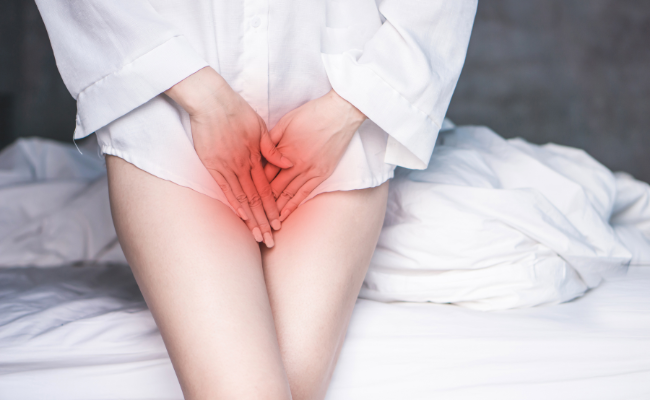How to Treat Vulvodynia?
- January 03, 2024
- No Comments

What is Vulvodynia?
Vulvodynia, pronounced vul-vo-DIN-ee-a, is a chronic pain condition affecting the vulva, vagina, or genitals without any apparent cause. Unlike common symptoms associated with infections or skin disorders, vulvodynia involves persistent discomfort lasting three or more months. This type of pain isn't a direct symptom of a specific condition and can be so draining that it hinders engagement in enjoyable activities. The complexity of vulvodynia lies in its prolonged duration and the absence of an evident underlying cause, making its diagnosis and treatment intricate.
Why Does Vulvodynia Occur?
Understanding the causes of vulvodynia is crucial for effective treatment. While no single cause has been identified, several factors may contribute:
- Nerve Irritation: Nerve dysfunction or irritation in the vulvar area may play a role in vulvodynia. The heightened sensitivity of nerves can lead to pain signals without any apparent trigger.
- Muscle Spasm: Involuntary muscle spasms in the pelvic floor muscles can contribute to vulvar pain. These spasms may be a result of increased tension or dysfunction in the pelvic muscles.
- Hormonal Changes: Fluctuations in hormone levels, especially estrogen, can influence vulvar sensitivity. Hormonal changes may contribute to the manifestation of vulvodynia symptoms.
- Infections or Inflammation: Past infections or inflammatory conditions in the vulvar region may lead to persistent pain. However, it's important to note that vulvodynia is not caused by an active infection.
- Genetic Predisposition: There may be a genetic predisposition to developing vulvodynia, as it sometimes occurs more frequently in individuals with a family history of chronic pain conditions.
Despite these potential contributors, vulvodynia often presents without a clear trigger, making diagnosis and treatment challenging.
How Does Vulvodynia Manifest?
The primary symptom of vulvodynia is persistent pain or discomfort in the vulvar region. This pain is often described as burning, stinging, or rawness. It can be constant or intermittent, impacting various activities such as sitting for extended periods, engaging in sexual activity, or using tampons. The symptoms can lead to significant distress, affecting sexual function and causing emotional strain.
Treatment Solutions for Vulvodynia
Vulvodynia treatment aims to alleviate symptoms, improve quality of life, and address the underlying factors contributing to the condition. Given the complexity of vulvodynia, a combination of approaches is often necessary.
- Topical Medications: Topical treatments, such as local anesthetics or steroids, are often used for symptom relief. These medications can help reduce pain and inflammation in the vulvar area when applied directly to the affected region.
- Physical Therapy: Pelvic floor physical therapy is a cornerstone of vulvodynia management. Therapists work with individuals to address muscle tension and dysfunction in the pelvic floor, offering exercises and techniques to promote relaxation and strength.
- Medications: Certain medications, such as tricyclic antidepressants or anticonvulsants, may be prescribed to modulate nerve signals and reduce pain perception. Hormone creams, especially estrogen or testosterone, may be recommended in cases where hormonal imbalances are identified.
- Biofeedback: Electromyographic (EMG) biofeedback is a technique that helps individuals gain awareness and control over pelvic floor muscles. This can be particularly beneficial in addressing muscle tension associated with vulvodynia.
- Cognitive-Behavioral Therapy (CBT): CBT is valuable for addressing the psychological aspects of vulvodynia. It helps individuals manage stress, anxiety, and negative thought patterns related to their condition, promoting a healthier mental state.
- Nerve Blocks or Injections: In certain cases, local anesthetic injections or nerve blocks may be employed to temporarily numb specific nerves and provide relief from pain.
Benefit Points:
- Individualized Treatment Plans: Vulvodynia treatment is highly individualized, recognizing the unique factors contributing to each person's condition. This approach ensures that the treatment plan is tailored to the individual's specific needs and symptoms.
- Improved Quality of Life: Effective vulvodynia treatment can lead to a significant improvement in quality of life. By addressing pain and discomfort, restoring sexual function, and alleviating emotional distress, individuals can experience a positive impact on their overall well-being.
- Holistic Approach for Comprehensive Relief: A holistic approach that integrates medical, physical, and psychological interventions provides comprehensive relief. By addressing various aspects of vulvodynia, this approach contributes to a more thorough and sustainable improvement in symptoms.
- Empowerment Through Education: Education about vulvodynia and its management is empowering. Understanding the condition enables individuals to actively participate in their treatment, promoting self-care and informed decision-making in collaboration with healthcare providers.
- Ongoing Support and Follow-Up: Regular follow-up and ongoing support from healthcare providers are crucial. This ensures that treatment plans are adjusted as needed, optimizing outcomes and addressing any emerging challenges over time.
Comments (0)